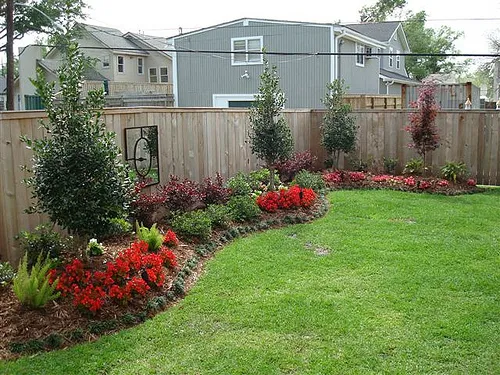The best time to do landscaping in Florida depends on the season. Generally, cooler months are ideal for planting and major projects.
Florida’s climate is unique with its hot summers and mild winters. This weather pattern affects landscaping activities. Understanding when to start can save time and money. It also ensures your plants thrive. Winter and early spring are usually the best times.
This period allows plants to establish roots before the heat. Additionally, the cooler weather makes outdoor work more pleasant. Knowing the right time to landscape can make a big difference. Let’s explore why timing matters for your Florida landscaping projects.

Credit: theperfectlight.com
Climate Considerations
For ideal landscaping in Florida, consider the cooler months from November to February. These months provide optimal conditions for planting and establishing new growth. Avoid the intense summer heat to ensure healthier plants.
Temperature Factors
Florida has a warm climate. Summers are hot and humid. Winters are mild and pleasant. The best time for landscaping is early spring. This is when temperatures are cooler. Plants can grow without stress. Avoid summer months. Extreme heat can damage plants.
Rainfall Patterns
Florida gets a lot of rain in summer. This can wash away soil and nutrients. The best time for landscaping is the dry season. Usually, this is in late fall and winter. Rainfall is lower, so plants can establish roots. Avoid rainy months. Too much rain can harm new plants.

Credit: www.tonybaroni.com
Optimal Seasons
Spring is a great time for landscaping in Florida. The weather is mild and plants can grow well. New plants get a good start. Rain helps keep the soil moist. Weeds are easier to control. Flowers bloom and lawns grow green. Spring provides the perfect conditions for planting. Gardeners love this season.
Fall is another good time for landscaping. The heat of summer is gone. Plants can establish roots without stress. Cooler temperatures help plants grow strong. Less watering is needed. Fall rains help plants settle in. Trees and shrubs benefit from fall planting. Gardeners can enjoy working outside. Fall offers many benefits for landscaping.
Plant Selection
Native plants are best for Florida gardens. They need less water and care. These plants grow well in the local soil. They also resist local pests. Choosing native plants can save you time and money.
Seasonal Choices
Different plants bloom in different seasons. Spring is great for planting annuals. These flowers will give your garden color. Summer is perfect for tropical plants. They love the heat. Fall is good for planting trees and shrubs. They will grow roots before winter.
Soil Preparation
Testing the soil helps in knowing its type and quality. Good soil is key for healthy plants. Take a sample from different spots in your garden. Send it to a lab for a detailed report. This will show what nutrients are missing. You can then add the needed minerals.
Add compost to improve soil texture. Use organic matter to boost nutrient levels. Avoid using too much fertilizer. It can harm plants. Mix amendments well into the soil. Water the soil after adding the amendments. This helps nutrients reach plant roots.
Watering Strategies
Installing an irrigation system can save time and water. It ensures plants get water when needed. Drip irrigation is very efficient. It delivers water directly to the roots. This reduces water waste. Another option is sprinkler systems. They cover larger areas. Adjust them to avoid overwatering.
Choose drought-tolerant plants to save water. These plants need less water to thrive. Examples include cacti and succulents. Native plants are also a good choice. They adapt well to local conditions. Mulch helps too. It keeps soil moist longer.
Pest Control
Florida has many pests. Some common ones are ants, termites, and mosquitoes. Ants can damage plants. Termites can harm trees and wood structures. Mosquitoes are a nuisance and can carry diseases. Controlling these pests is important for a healthy garden.
Use mulch to keep pests away. Regularly inspect plants for signs of damage. Remove standing water to reduce mosquito breeding. Plant pest-resistant varieties to lower risks. Keep your garden clean and tidy. Use natural pesticides for a safer environment. Encourage beneficial insects like ladybugs and spiders. They eat harmful pests.
Maintenance Routines
Trees and shrubs need regular care. Prune in late winter or early spring. This helps plants grow better. Remove dead or damaged branches. Cut back overgrown areas. This keeps plants healthy and neat.
Fertilize lawns and gardens in spring. This gives plants a good start. Use the right type of fertilizer. Follow the instructions on the package. Fertilize again in the summer. This keeps plants strong. Do not over-fertilize. It can harm plants.

Credit: www.dailycommercial.com
Expert Advice
Landscaping experts in Florida suggest starting projects in early spring. This time of year is ideal for planting trees and shrubs. The weather is cooler, which helps new plants grow strong roots. Summer is not the best time. Heat can stress new plants. Fall is another good season for landscaping. Cooler temperatures and more rain help plants to establish well. Professional landscapers recommend avoiding winter. The cold can harm new plants.
Many local nurseries and garden centers can help. They provide the right plants for Florida’s climate. Local experts know the best plants for your area. They also offer advice on soil and watering needs. Check with your local extension service too. They provide free information on landscaping and gardening. Libraries often have books and resources on Florida landscaping. They can be very helpful for new gardeners.
Frequently Asked Questions
When Is The Ideal Time For Landscaping In Florida?
The ideal time for landscaping in Florida is during the cooler months, from October to April. This period offers optimal growing conditions and less stress on plants.
Can I Landscape In Summer In Florida?
Landscaping in summer in Florida is possible but challenging. The intense heat and humidity can stress plants. Focus on maintenance and watering.
What Plants Are Best For Florida Landscaping?
Native plants like saw palmetto, coontie, and firebush thrive in Florida’s climate. They require less water and maintenance, making them ideal choices.
How Often Should I Water My Florida Landscape?
Water your Florida landscape 2-3 times a week during cooler months. In summer, increase to daily watering to combat heat stress.
Conclusion
Choosing the best time for landscaping in Florida is crucial. Spring and fall offer ideal conditions. Cooler temperatures and regular rain help plants thrive. Avoid the intense summer heat. Winter can be unpredictable, causing challenges. Plan ahead, and consult local experts.
Proper timing ensures a beautiful, healthy landscape. Remember, patience and care lead to great results. Happy landscaping!

My mission is to help you bring the beauty of nature indoors with expert advice, detailed plant care guides, and creative design ideas.





Leave a Reply